Potrebujeme váš súhlas na využitie jednotlivých dát, aby sa vám okrem iného mohli ukazovať informácie týkajúce sa vašich záujmov. Súhlas udelíte kliknutím na tlačidlo „OK“.
ASTM D1907/D1907M-12
Standard Test Method for Linear Density of Yarn (Yarn Number) by the Skein Method
Automaticky preložený názov:
Štandardná skúšobná metóda pre lineárne hustotu priadze (priadze číslo) o klbku metódou
NORMA vydaná dňa 1.7.2012
Informácie o norme:
Označenie normy: ASTM D1907/D1907M-12
Poznámka: NEPLATNÁ
Dátum vydania normy: 1.7.2012
Kód tovaru: NS-18721
Počet strán: 9
Približná hmotnosť: 27 g (0.06 libier)
Krajina: Americká technická norma
Kategória: Technické normy ASTM
Kategórie - podobné normy:
Anotácia textu normy ASTM D1907/D1907M-12 :
Keywords:
yarn linear density, yarn number, ICS Number Code 59.080.20 (Yarns)
Doplňujúce informácie
| Significance and Use | ||||||||||||||||||||||
|
Test Method D1907 is considered satisfactory for acceptance testing of commercial shipments, since it has been used extensively in the trade for that purpose. In case of dispute arising from differences in reported test results when using Test Method D1907 for acceptance testing of commercial shipments, the purchaser and the supplier should conduct comparative tests to determine if there is a statistical bias between their laboratories. Competent statistical assistance is recommended for the determination of such a bias. As a minimum, the two parties should take a group of test specimens that are as homogeneous as possible, and that are from the same lot of the material in question. The test specimens should then be randomly assigned in equal numbers to each laboratory for testing. The average results from the two laboratories should be compared using statistical analysis for unpaired data, and an acceptable probability level chosen by the parties before testing begins. If a bias is found, either its cause must be identified and corrected, or the purchaser and supplier must agree to interpret future test results for that material with consideration to the known bias. This test method is intended primarily for the determination of the average linear density of yarns. However, the variations identified by the results may also provide useful information. If the coefficient of variation is to be calculated, each skein must be weighed separately, and a larger number of skeins will need to be tested (as compared to the number of skeins to be tested for the determination of the average yarn linear density alone). This test method includes seven options, depending on whether the yarn is scoured before weighing, weighed in the conditioned or oven-dried state, or whether or not the results obtained are adjusted for commercial moisture regain, or a commercial allowance. Option 1 (unscoured, conditioned yarn) is generally used for yarns spun on the cotton system, while Options 6 and 7 (scoured, oven dried yarn, plus commercial moisture regain, or allowance) are generally used for filament yarns, or yarns containing wool fibers. The specific options to be used in any instance shall be agreed upon by the parties, or as prescribed in test methods or tolerances. In Options 2, 3, 5, 6, and 7, an oven-dried sample is obtained by exposing the yarn in an oven with a supply of air at standard textile testing conditions, as described in 6.3. |
||||||||||||||||||||||
| 1. Scope | ||||||||||||||||||||||
|
1.1 This test method covers the determination of the linear density of all types of yarn in package form, subject to the limitations of size and stretch given in 1.2 and 1.3. Provision is made for expressing yarn linear density in all the traditional yarn numbering systems. 1.2 This test method is applicable to yarns that stretch less than 5 % when tension on the yarn is increased from 0.25 to 0.75 cN/tex [0.25 to 0.75 gf/tex]. By mutual agreement, and use of a lower than specified reeling tension, this method may also be adapted to measure the linear density of yarns that stretch more than 5 %, under the above force. 1.3 This method is applicable to yarns finer than 2000 tex. However, it may be also adapted to coarser yarns by the use of skeins of shorter than specified lengths, and alternate reeling conditions, agreeable to the interested parties. 1.4 Depending on the procedure used to calculate the moisture content of the yarn being tested, and its actual moisture content, or finish content, or both, one or more of the following options may be utilized. 1.4.1 Unscoured Yarn: Option 1Yarn at equilibrium with the standard atmosphere for testing textiles. Option 2Oven-dried yarn. Option 3Oven-dried yarn, plus commercial moisture regain. 1.4.2 Scoured Yarn: Option 4Scoured yarn at equilibrium with the standard atmosphere for testing textiles. Option 5Oven-dried, scoured yarn. Option 6Oven-dried, scoured yarn, plus commercial moisture regain. Option 7Oven-dried, scoured yarn, plus commercial allowance (commercial moisture regain, plus an allowance for finish). 1.5 Specimens used to determine yarn linear density may also be used to determine the skein breaking strength of the yarn. Hence, this method provides the sequence of steps to be followed, to determine both these yarn properties. Note 1—The linear density of yarns produced with jute, or glass, may also be determined by the following approved methods: Specifications D541, D578, and D681. The linear density of short yarn segments, raveled from fabrics, may be determined by Test Method D1059. 1.6 The values stated in either SI units or inch-pound units are to be regarded separately as standard. The values stated in each system may not be exact equivalents; therefore, each system shall be used independently of the other. Combining values from the two systems may result in non-conformance with the standard. 1.7 This standard does not purport to address all of the safety concerns, if any, associated with its use. It is the responsibility of the user of this standard to establish appropriate safety and health practices and determine the applicability of regulatory limitations prior to use. |
||||||||||||||||||||||
| 2. Referenced Documents | ||||||||||||||||||||||
|
Podobné normy:
Historická
1.7.2013
Historická
1.6.2010
Historická
1.2.2012
Historická
1.7.2012
Historická
1.7.2012
Historická
1.1.2011
Odporúčame:
EviZak - všetky zákony vrátane ich evidencie na jednom mieste
Poskytovanie aktuálnych informácií o legislatívnych predpisoch vyhlásených v Zbierke zákonov od roku 1945.
Aktualizácia 2x v mesiaci !
Chcete vedieť viac informácii ? Pozrite sa na túto stránku.


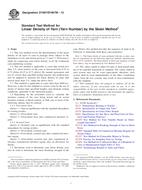
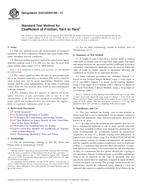 ASTM D3412/D3412M-13..
ASTM D3412/D3412M-13..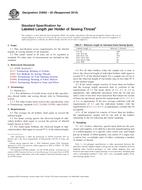 ASTM D3693-02(2010)..
ASTM D3693-02(2010)..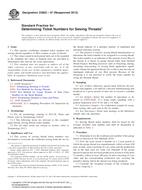 ASTM D3823-07(2012)..
ASTM D3823-07(2012)..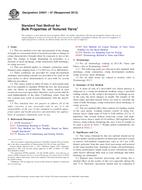 ASTM D4031-07(2012)..
ASTM D4031-07(2012)..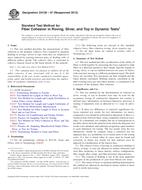 ASTM D4120-07(2012)..
ASTM D4120-07(2012)..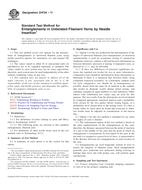 ASTM D4724-11
ASTM D4724-11
 Cookies
Cookies
